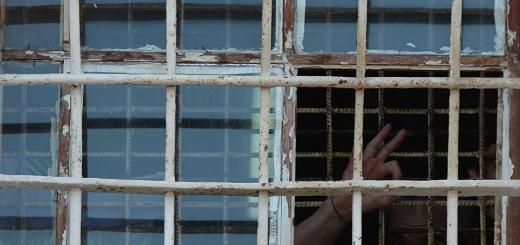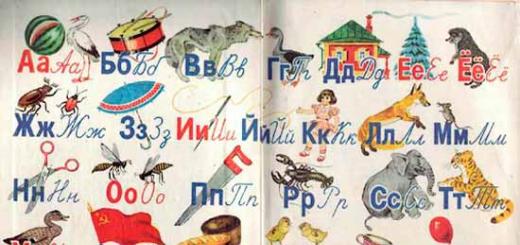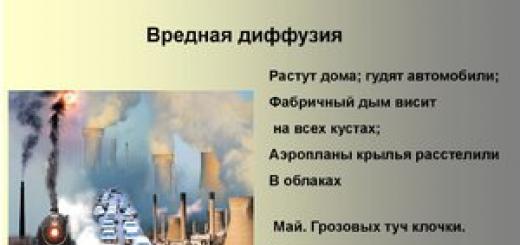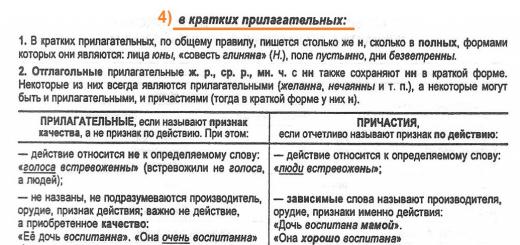I was sorting through old books and came across my old school primer from 1984. I skimmed through it and, to be honest, I was stunned. This children's book, from which children should learn to read with joy and pleasure, turned out to be so densely saturated with communist propaganda that it is even surprising how we, born in the USSR, managed to avoid final and irrevocable zombification.
The trash starts from the very first page. I quote: “Today you begin your journey to a wonderful, extraordinary country - the Land of knowledge. You will learn to read and write, for the first time you will write the words that are dearest and closest to all of us: mother, Motherland, Lenin.”
Further more. Lenin, the party, the Great October Revolution, the USSR - the best country in the world, veterans, the Second World War, and - a rather persistent push for the idea of becoming an astronaut. It seems that the USSR was planning a large-scale space expansion.
So don’t be surprised by the amount of cotton wool in the brains of your compatriots. Rather, one should be surprised that even with such grandiose and systematic efforts of state propaganda, normal people remained.
One user wrote:
- Was the alphabet really printed abroad? I always thought that in the USSR everything was fine with the printing industry... Well done, the Germans - they succeeded everywhere. They tried for themselves and they helped us



I also racked my brains - why are the letters in the alphabet and primer different in order?)) 



lybimye_knigi
It still remains a mystery to me where this alphabet was used - in school or kindergarten? I remember my blue primer, they gave it to us right away in first grade, I even have a photo of me with it at my desk. I also remember the alphabet, but when did we learn it? Both books teach reading in the same way, why was it necessary to duplicate?
elenka_knigolub
I think that this ABC was intended for children to study with their parents or in kindergarten.
I looked at the Primer now - it is more complicated: it already contains vowels/consonants, hard/soft sounds, writing, charades, puzzles, and in general it was approved by the Ministry of Education of the RSFSR, unlike the ABC.
And this ABC, by the way, contains, in addition to the letter section, also materials for teaching counting, as well as dedicated to children's creativity.
For those who want to “look through” the ABC online -
Primer, 1987
Almost all Soviet children learned from this primer.
1.
2.
3.
4.
5.
6.
7.
8.
Primer 1970.
First-graders of the 70s were less fortunate - the cover of the 1970 Primer was simpler and more concise. I studied on it in first grade in 1984.
1.
2.
3.
4.
5.
6.
7.
8. Printed in the GDR. But why? And "Who is this? What is this?" in two volumes they were also once published in the GDR. 
When I was a child, my husband and I had a two-part textbook that taught us Russian.
Designed for preparatory and first grades of national schools, as well as for foreigners starting to learn Russian.
Russian language in pictures.
Barannikov I.V., Varkovitskaya L.A. Old edition of the textbook. 1971
I had one like this. The second part was not found.
1.
2.
3.
4.The pages of the textbook reflect Soviet life in the 60s. 
5. Please note - the stove is wood-burning. 
6.
My husband and I had these publications. We loved leafing through them as children - looking at the pictures and trying to read the words.
1982 First part
1.
2.
3.
4.
5.
6.
7.
8.
9.
10.
11.
12.
13. For me this garden was like a living creature) 
14. The perfect family lunch. Again, grandma fries, mom cooks soup. 

Second part.
1.
2.
3.
4.
5.
6.
7.
8.
9. Gas stove. Soviet life of the late 70s and early 80s. 
10.
11.
12. Soviet supermarket, and previously it was a department store selling a full range of food and drinks. Supermarket. 
13. And the small cake turned out to be a sign - this is “Fairy Tale”! 
14. To this day we remember this when we communicate on the Internet - on forums, in chats: some go to bed, while others are still at work. 
17.
I've always liked illustrations in this style. Emotional. Animals are like people. Such pictures are in all textbooks and in manuals for extracurricular activities. For a long time I could not find the artist's name. By process of elimination, I assumed that it was E.V. Viktorov. I couldn't find anything about him on the Internet. Maybe some of the readers know about him?




E.V. Viktorov also created covers for math notebooks.

This is probably one of the artist's first works. Textbook "Native speech. 1st grade" 1975.

What were the first Soviet alphabets?
On December 26, 1919, a decree was issued to eliminate illiteracy among the population of the RSFSR. Among the points of the decree was the following:
8. Those who evade the duties established by this decree and prevent illiterate people from attending schools will be held criminally liable.
This means that all those who could read and write were obliged to teach the illiterate, and those who could go to school. Apparently, some families did not allow girls and women to go to school - they say it’s not a woman’s business.
However...
5. For students of literacy who are employed, with the exception of those employed in militarized enterprises, the working day is reduced by two hours for the entire duration of training while maintaining wages.
Full text of the decree -
1.
2.
3.

4.
5.
6. Only under Soviet rule could women learn to read and write - after all, it was believed that a “woman” was incapable of learning.

Primer for adults "Down with illiteracy" (1920), beginning with the slogan “We are not slaves. We are not slaves,”
1.

2.
3.
4.
5.
There were others - "Workers' and Peasants' Primer", the communist primer "The Competent Red Army Soldier" and "Anti-Religious ABC" (1933).
ABC of the Revolution, 1921
The series of posters “The ABC of Revolution”, made by Ukrainian artist Adolf Strakhov, was first published in 1921. The main theme of this set is the life of the young Soviet Republic in the first post-revolutionary years. "The ABC of the Revolution", despite the not entirely perfect literary form of its subtext poems, was a significant phenomenon in the propaganda art of the 1920s and was subsequently - in 1969 - republished by the Kyiv publishing house "Mistetstvo".




Continuation of the alphabet -
Anti-religious alphabet. Hardly for first graders.
UTILIBURO IZOGIZA.
Moscow 1933 Leningrad.
Artist Mikhail Mikhailovich Cheremnykh.
- Nowadays in Russia they are not able to create any sensible social advertising. No creativity, execution - so-so. And here is a whole alphabet with decent and expressive (I speak as an expert) illustrations!
- “Nowadays in Russia they are not able to create any kind of sensible social advertising” - nowadays everyone has become much “wiser” and almost throws away their rights. That's why you won't see good social advertising.
1.
2.
3.
4.
Well, who would have thought that we would live to see a time when such a picture would become relevant again.
5.Why did Gandhi not please the Soviet Bolsheviks?
- Well, apparently, during his political maneuvers, various criticisms arose against him.
- These are communists, they always saw only enemies abroad, so they incited the people against India, as well as against other countries...
- Read the story. The USSR always tried to maintain friendly relations with India, as a revolutionary country that rebelled against the yoke of the British colonial forces.
- They shouldn’t talk so much about Gandhi.

6.
- As far as I remember, Ford supported the Nazis during the Third Reich, so he was assigned to this alphabet
- They dragged it here only because the so-called Ford conveyor belt, in the understanding of the communists, is the most pronounced form of exploitation, where the personality of a person in the production of any object does not matter in the slightest.

Continuation of the primer in
There was the "Soviet Erotic Alphabet", created in 1931 by the future People's Artist of the USSR Sergei Dmitrievich Merkurov (1881-1952). It is interesting that the author of this alphabet was a sculptor-monumentalist, the author of numerous monuments to Joseph Stalin (including the three largest in the USSR) and Lenin, as well as tombstones near the Kremlin wall - F.E. Dzerzhinsky, A.A. Zhdanov, M.I. Kalinin, Ya.M. Sverdlov, M.V. Frunze.






ABC of Vladmir Konashevich- this time for children. Without revolutionary slogans.
As the artist’s daughter recalled, “ABC” was born from letters that Konashevich wrote to his wife: “Dad wrote letters to mom, and sent me pictures. For every letter of the alphabet. I was already four years old, and, obviously, he believed that it was time to know the letters. Later, these pictures were published under the title “The ABC in the drawings of Vl. Konashevich."
Publisher: TV-vo R. Golike and A. Vilborg
Place of publication: Petrograd
Year of publication: 1918
Interestingly, there is no hard sign at the end of words in the alphabet, but the letters Fita and Izhitsa have been preserved.
1.
2.
3.
4.
5. Two spelling options - old and new. 
6.

Completely alphabet -
Primer 1937
The time is such that we must praise our leaders and dear comrades almost on our knees...




I.S. Belyaev. Primer. 1943.
State Publishing House K-FSSR.
A prominent figure in public education in Karelia. In teaching work from 1930 to 1940. from 1940 - Deputy People's Commissar, and from 1944. to 1951 - People's Commissar - Minister of Public Education of the K-FSSR. In 1944-1949. did a lot to restore the school network in Karelia. Honored Teacher of Karelia, Candidate of Pedagogical Sciences, author of more than 20 textbooks. He prepared several textbooks during the war years.

After the war.





"ABC", 1970.
Publishing house "Enlightenment", tenth edition. Authors: Voskresenskaya A.I., Redozubov S.P., Yankovskaya A.V.
1.
2.
3.
4.
5.
6.
7.
8.Mom works at home - by whom? 
9.
10.
And this is an ABC book for children with limited hearing. Children with degrees 2-4 hearing loss and complete hearing loss were called deaf-mute. At that time there was no special equipment (headphones and microphones) and powerful hearing aids that would help children with degrees 2-4. There were no modern methods of teaching children to speak. Therefore, they were taught to write correctly, read lips - if they can’t say it, then let them write it on a piece of paper. And reading books is a source of knowledge. There were dactylic alphabet and sign language at that time, but there weren’t very many sign language interpreters, mostly hearing children of deaf parents who had lost their hearing after illness (acquired non-hereditary deafness)
Zykov S.A. Primer for deaf schools
Publisher: State. educational and pedagogical publishing house of the Ministry of Education of the RSFSR Year: 1952
This primer is built using the sound (analytical-synthetic) method. Training on it is designed for one and a half years. In order to maintain the interest of students, the primer contains exercises and games, and the texts are accompanied by illustrations. To develop a sense of rhythm, short poems are included in the primer. When reading from a primer, children become familiar with grammar concepts such as the singular and plural of a noun, the present and past tense of a verb, the masculine and feminine gender of a verb, the formation of words by adding a prefix, etc.
Teaching writing is carried out simultaneously with teaching reading, so the primer also contains exercises for writing.

1.
2.
3.
4.
5. Life of Soviet citizens in the 50s. There is a TV, but there is no chandelier in sight.
6. Articulation of the lips with the sound "a".
7.
8.
9.
10. Reminds me of a method of teaching a foreign language. This is understandable; for deaf children, their native language is just like a foreign language. Learn words that denote objects, actions, etc. The highlighted syllables indicate stress where you need to raise your voice.
11.
12.There were headphones in schools for deaf children. But there is no equipment or buttons. Apparently, there were almost none... In the classroom, the desks are arranged in a circle so that the children can look at the teacher, or rather at her lips and the gestures of the dactyl alphabet.
13.
14.
Donskaya N.Yu., Linikova N.I. Primer for schools of the hearing impaired.
Second edition. M.: Enlightenment, 1986. It was from it (first edition) that I studied in first grade, right after the primer in the blue cover.
Cover artist E.V. Viktorov.

1.
2.
3.
4. There are few students in the class - not only because there are many fewer hearing impaired people than hearing people. But for a teacher, ten students are the same as 30 hearing students. Their speech needs to be monitored and their pronunciation corrected, and this takes a lot of time.
The hardware for controlling headphones and microphones appears to be built into the desk. Just added. Today I spoke at work with a deaf person whose child goes to a school for children with hearing impairments. He said that in such schools there has been no equipment for a long time; now everyone wears hearing aids of varying power.
5. This is the same equipment on the teacher’s desk, but it’s hard to see. The teacher does not sing into the microphone, she speaks. Desk for two students. The students have headphones, but they don’t stand out. Apparently, the walker did not emphasize them for aesthetic reasons. Usually these are black rubber headphones on a black flexible hoop.
8. Emphasis on each word. A funny and educational story. The artist is still the same E.V. Viktorov.
Well, that's it, I end the post here.)
And what kind of primers are now for modern schoolchildren? ABCs?
Primer - the beginning of the beginning. The primer is the first book of a first-grader. Almost every Soviet boy and girl began the difficult path of knowledge with this book. The primer is a book that was the first to give Soviet children education and love for the Motherland and loved ones. Maybe that’s why, in order not to forget our first textbook, we first-graders were photographed with the primer on the desk or in our hands. Many people probably have such photos. And many years later, I accidentally came across this book. After looking through the primer, I shed a tear from the surging nostalgia. Seeing illustrations remembered from childhood in a textbook, the associations with which they are associated emerge in my memory. On this page, I read a poem about mittens to the whole class, syllable by syllable, and looking at the picture of cheerful children sliding down the slide, I wanted classes to end quickly and run to the ice-frozen pond to ride down the huge slide. You may also, after viewing the primer, recall some memories of your childhood and school years.
In the Land of the Soviets, education was at a very high level and at the same time (it’s hard to believe now) free. Every Soviet schoolchild knew that by focusing only on one’s own knowledge, one could enter a higher educational institution without a bribe or a “hairy” hand. Therefore, many children strived to graduate from school with honors. Where did a schoolchild’s education begin? Of course, from him - from “ Primer»!
 Now almost all children are sent to school from the age of six. At the same time, teachers require that the child already be able to read fluently and master counting. Nowadays, kids are simply forced to grow up early, and not because their childhood is devoid of balloons and toys, but because children’s serene carefreeness ends exactly at the age of five, when “hopeless” studies in preparatory courses begin... But this did not happen in the Union: and there were fewer lessons assigned and there was enough time for sports and yard games. I remember that we went to first grade at the age of seven or eight, without knowing how to read or count. And we were given fewer lessons than now. For example, my first-grader, after serving seven years in school! lessons, brings home “mountains” of homework in writing, mathematics, natural history, English, labor...
Now almost all children are sent to school from the age of six. At the same time, teachers require that the child already be able to read fluently and master counting. Nowadays, kids are simply forced to grow up early, and not because their childhood is devoid of balloons and toys, but because children’s serene carefreeness ends exactly at the age of five, when “hopeless” studies in preparatory courses begin... But this did not happen in the Union: and there were fewer lessons assigned and there was enough time for sports and yard games. I remember that we went to first grade at the age of seven or eight, without knowing how to read or count. And we were given fewer lessons than now. For example, my first-grader, after serving seven years in school! lessons, brings home “mountains” of homework in writing, mathematics, natural history, English, labor...
 So I keep grumbling, probably because even honey seemed sweeter in childhood. I still remember with a joyful feeling my first call, my first teacher Lidia Ivanovna, how she, standing at the blackboard, held the “Primer” in her hands and solemnly said: “this is the most important book in your life, with it you will begin your journey to world of knowledge..." Thinking like this, I was clearing out the bookshelves for my first-grader’s new books and in the very corner I found, believe it or not, “A Primer”! Hello old friend! I open the first page... oh yes Lidiya Ivanovna... she borrowed her speech from there, she just forgot to add that “thanks to the Primer, you will learn to write your first words “mother”, “Motherland” and “Lenin”!” And somewhere, from the depths of my memory, a memory emerges that there was such a tradition: all first-graders were seated at their desks with an “ABC book” in their hands for a photo. Probably every Soviet schoolchild had such a photograph, which was then proudly signed on the back “September 1, 1969. Vania". Do you remember the joke: “mother washed the frame, and the frame washed mother”? So, it turns out that the sentence “mom washed the frame” was only in the 1959 Primer. And, returning to my schoolboy son, in his modern “ABC” by Zhukova there is the phrase “Vova is washing the frame.” Is it clear where the legs come from?
So I keep grumbling, probably because even honey seemed sweeter in childhood. I still remember with a joyful feeling my first call, my first teacher Lidia Ivanovna, how she, standing at the blackboard, held the “Primer” in her hands and solemnly said: “this is the most important book in your life, with it you will begin your journey to world of knowledge..." Thinking like this, I was clearing out the bookshelves for my first-grader’s new books and in the very corner I found, believe it or not, “A Primer”! Hello old friend! I open the first page... oh yes Lidiya Ivanovna... she borrowed her speech from there, she just forgot to add that “thanks to the Primer, you will learn to write your first words “mother”, “Motherland” and “Lenin”!” And somewhere, from the depths of my memory, a memory emerges that there was such a tradition: all first-graders were seated at their desks with an “ABC book” in their hands for a photo. Probably every Soviet schoolchild had such a photograph, which was then proudly signed on the back “September 1, 1969. Vania". Do you remember the joke: “mother washed the frame, and the frame washed mother”? So, it turns out that the sentence “mom washed the frame” was only in the 1959 Primer. And, returning to my schoolboy son, in his modern “ABC” by Zhukova there is the phrase “Vova is washing the frame.” Is it clear where the legs come from?
 In general, I began to wonder, how many “Primers” were published in the Union, who was the author? Come on, old friend of my Red Banner childhood, tell me your secrets. Officially, in the Country of Soviets, the “Primer” was “born” in 1937, under the authorship of the honored teacher Nikolai Golovin. People immediately “joked” at his expense: the whole country taught children using Golovin’s “Primer.” Then, this publication was revised and supplemented with new examples, copybooks, pictures from folk tales about “Kolobok”, “The Ryaba Hen”, “Turnip” and so on. Moreover, only pictures were given in order to develop the child’s oral speech (he had to, looking at the textbook, tell the given fairy tale by heart). I remember how we told the story “About the Goldfish” to the whole class, one by one, one sentence at a time. The story was a little funny and not always believable. Moreover, it was quite easy for children to navigate the “ABC”: vowels were indicated by a red rectangle, consonants – by a green rectangle. There were also socially useful images: here is a girl watering flowers, and here she is leading her grandmother across the road. There was always a page with a portrait of Lenin and a description of how he takes care of children (no matter how many times I looked through the first textbooks, I never found a portrait of Stalin). There was always a section “about the Motherland”: a picture with a map of the Union and images of children in national costumes.
In general, I began to wonder, how many “Primers” were published in the Union, who was the author? Come on, old friend of my Red Banner childhood, tell me your secrets. Officially, in the Country of Soviets, the “Primer” was “born” in 1937, under the authorship of the honored teacher Nikolai Golovin. People immediately “joked” at his expense: the whole country taught children using Golovin’s “Primer.” Then, this publication was revised and supplemented with new examples, copybooks, pictures from folk tales about “Kolobok”, “The Ryaba Hen”, “Turnip” and so on. Moreover, only pictures were given in order to develop the child’s oral speech (he had to, looking at the textbook, tell the given fairy tale by heart). I remember how we told the story “About the Goldfish” to the whole class, one by one, one sentence at a time. The story was a little funny and not always believable. Moreover, it was quite easy for children to navigate the “ABC”: vowels were indicated by a red rectangle, consonants – by a green rectangle. There were also socially useful images: here is a girl watering flowers, and here she is leading her grandmother across the road. There was always a page with a portrait of Lenin and a description of how he takes care of children (no matter how many times I looked through the first textbooks, I never found a portrait of Stalin). There was always a section “about the Motherland”: a picture with a map of the Union and images of children in national costumes.
 So, the Primer was published in Moscow, by the Prosveshchenie publishing house. The editorial board took a very responsible approach to the book’s illustrations. The expert commission reviewed the Primer's drawings in detail: they should not be overloaded with details. They must have a positive educational and clearly expressive character, because it was believed that the child’s psyche is very vulnerable and has imaginative, rather than logical, thinking. Therefore, it is not surprising that experienced, even famous artists were involved in painting the Primer, for example V. Ezhkova, V. Bogdanov, T. Nikulina. The Primer was published in 1943, 1945, 1950, 1951, 1952, 1959, 1962,1963, 1967, 1970, 1983, 1987. As a rule, each edition of the textbook was created by a team of authors. However, the most famous in this area were: Golovin N. (“Primer” 1937-44), Voskresenskaya A. (“Primer” 1952, 9th edition and “Primer” 1959, 16th edition), Arkhangelskaya N. (1967 and 1970 5th edition), Svadkovsky I. (1962 10th edition), Gorbushina A. (1983 23rd edition), Goretsky V. 1987 (7th edition). I just want to say “thank you!” with love! for this first book in my life and for the age-yellowed photo of that curly-haired first-grader from 1970, who smiles so proudly in her arms with her ABC book. And we all know where the Motherland begins!
So, the Primer was published in Moscow, by the Prosveshchenie publishing house. The editorial board took a very responsible approach to the book’s illustrations. The expert commission reviewed the Primer's drawings in detail: they should not be overloaded with details. They must have a positive educational and clearly expressive character, because it was believed that the child’s psyche is very vulnerable and has imaginative, rather than logical, thinking. Therefore, it is not surprising that experienced, even famous artists were involved in painting the Primer, for example V. Ezhkova, V. Bogdanov, T. Nikulina. The Primer was published in 1943, 1945, 1950, 1951, 1952, 1959, 1962,1963, 1967, 1970, 1983, 1987. As a rule, each edition of the textbook was created by a team of authors. However, the most famous in this area were: Golovin N. (“Primer” 1937-44), Voskresenskaya A. (“Primer” 1952, 9th edition and “Primer” 1959, 16th edition), Arkhangelskaya N. (1967 and 1970 5th edition), Svadkovsky I. (1962 10th edition), Gorbushina A. (1983 23rd edition), Goretsky V. 1987 (7th edition). I just want to say “thank you!” with love! for this first book in my life and for the age-yellowed photo of that curly-haired first-grader from 1970, who smiles so proudly in her arms with her ABC book. And we all know where the Motherland begins!
Download "Primer"
Primer 1937.Author: Golovin N. M.Publisher: Uchpedgiz Year: 1937 Format: PDF Size: 171.6 MB Number of pages: 72 « » |
Primer 1946.Author: Redozubov S. P.Publisher: Uchpedgiz Year: 1946 Format: DjVu + program for viewing .djvu files Language: Russian (pre-reform) Number of pages: 98 Size: 2.72 MB |
Download Soviet textbook
Study! Study! And study again!
V.I.Lenin
Approved by the Ministry of Education of the RSFSR
© "
Pillumination"
Moscow 1987
Format: PDF, File size: 5.35 MB
Today you begin your journey to a wonderful, extraordinary country - the Land of Knowledge! You will learn to read and write, for the first time you will write the words that are dearest and closest to all of us: mom. Motherland, .
The school will help you become a competent and hardworking citizen of our great Motherland - the Union of Soviet Socialist Republics.
We congratulate you on the start of your studies and give you your first school book - the Primer. Keep him safe! It will open the door to the world of new, interesting books. From it you will learn how great and beautiful our Motherland is, how much Soviet people do so that there is always peace throughout the entire Earth!..
Be diligent and hardworking.
Good luck, dear friend!

Download the USSR textbook - Primer 1987
Cm. Excerpt from the textbook...
For pilots in flight - For those in the sky At work!
For those at the stoves - No hot work!
To the tractor driver -
Glory in the field
And your job is at school.
Your work is also visible.
Honest work!
Goats and wolf.
Once upon a time there lived a goat. She had seven children. She made herself a hut in the forest. Every day the goat went into the forest for food. She leaves on her own, and tells the children to lock themselves tightly and not open the doors to anyone...
When the dog approaches the swamp, the lapwing flies off the nest and lures the dog with it. He runs in front of the dog. The dog rushes after him, wants to catch him. And the lapwing takes the dog away from its nest.










